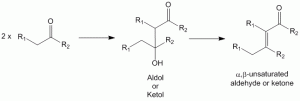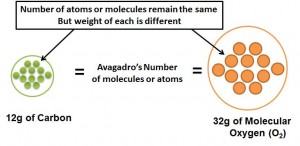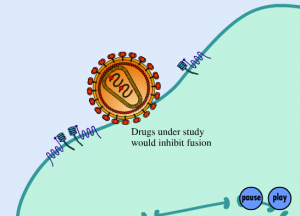Introduction
Reversed-phase chromatography (abbreviated as RPC) is an important analytical technique which is widely used by analytical chemists in pharmaceuticals, forensics, food technology, biotechnology and even medicine. The primary difference between reversed-phase chromatography and normal phase chromatography is that the stationary phase in RPC utilizes a non-polar or hydrophobic surface as opposed to a polar (Si-OH) surface used in normal phase chromatography.
(Note- check the animation for the principle of thin layer chromatography to understand how normal phase works)
Today reverse phase chromatography surfaces are used with HPLC (high pressure liquid chromatography) and even UPLC (ultra pressure liquid chromatography) systems making it a very useful tool for analytical chemists.
Animation of Reversed-Phase Chromatography (Principle)
The animation below will explain the principle of reversed-phase chromatography. Press the play button in order to move ahead in the animation. To rewind the animation move the scroll bar to the left.
[swfobject]2401[/swfobject]
Transcript:
1. Reversed-phase chromatography is all about the particle surface of the HPLC/UPLC column and the eluent solvent. The first slide shows a diagramatic view of the column with many small silica particles (in green).
2. Zooming in on the surface of these particles we see that the particle surface is made of modified silica surface-in this case alkylated silica (18-carbon length alkyl chain and hence the name “C18” column) which is wetted by polar solvents (such as water). This makes the surface of the particles highly non-polar and hydrophobic, while the eluent solvent is polar. Thus the surface chemistry of the particles is exactly opposite as that seen in normal phase chromatography.
Note- C18 is just one type of silica used in reversed phase chromatography. Other types include C8 (8-carbon alkyl chain), C4 (4-carbon alkyl chain), diphenyl and divinylbenzyl phases.
3. Thus due to the polar/non-polar chemistry of the eluent and the stationary phase, polar compounds such as those containing carboxylates (for e.g. benzoic acid shown in blue) would not interact much with the surface and would therefore spend more time in the mobile phase. As a result it would elute out more quickly as shown in the chromatogram.
4. On the other hand, relatively non-polar molecules with alkyl chains and higher hydrophobicity (for e.g. p-ethylphenylmethanol) would interact with the non-polar alkyl chains of the silica and therefore be retained on the surface more. As a result such non-polar molecules would elute out later as shown in the chromatogram.
5. This elution trend of polar first, non-polar later is exactly opposite from that observed in normal phase chromatography (where it is non-polar first and polar later). It is from this phenomenon that reversed-phase chromatography gets it’s name.
Also check out the animation for the principle and mechanism of reversed-phase ion-pairing chromatography– an advanced HPLC and UPLC technique.
Check out the following books for more information (references):
- Introduction to Modern Liquid Chromatography
. Lloyd R. Snyder et. al.
- Practical High-Performance Liquid Chromatography
. Veronika R. Meyer.
- Liquid Chromatography-Mass Spectrometry, Third Edition (Chromatographic Science Series)
. Wilfried M.A. Niessen




Hello Mr. Akul
Good explainaion with animation, this hepling us alot.
Keep doing good work.
With regards
Heman Bankhede
thx a lot
A nice article!thank you!